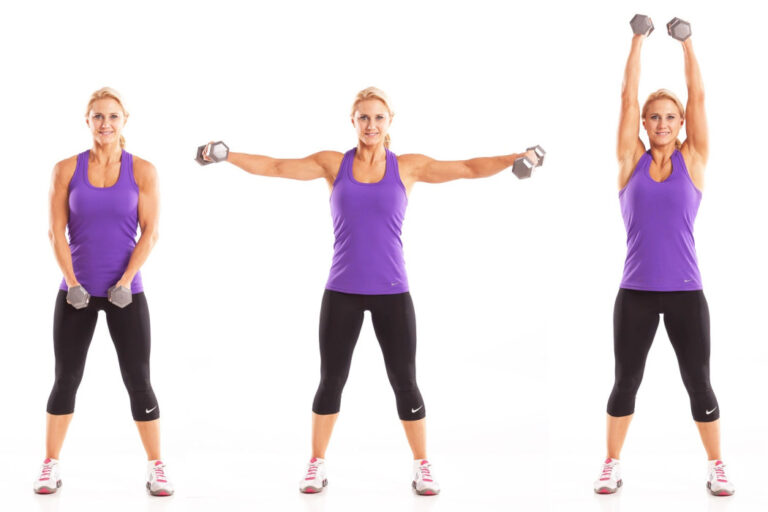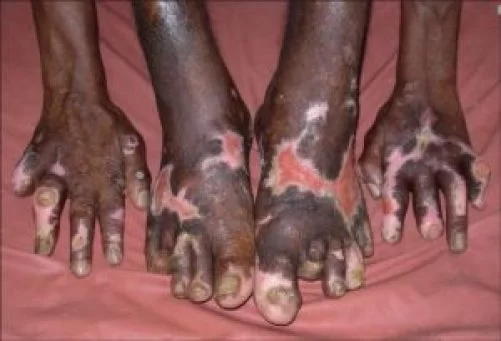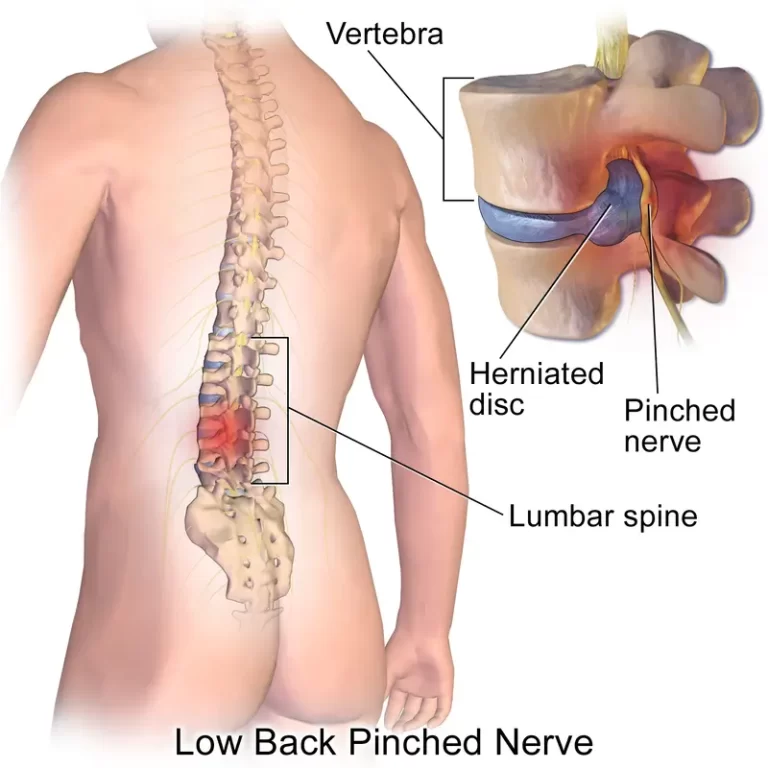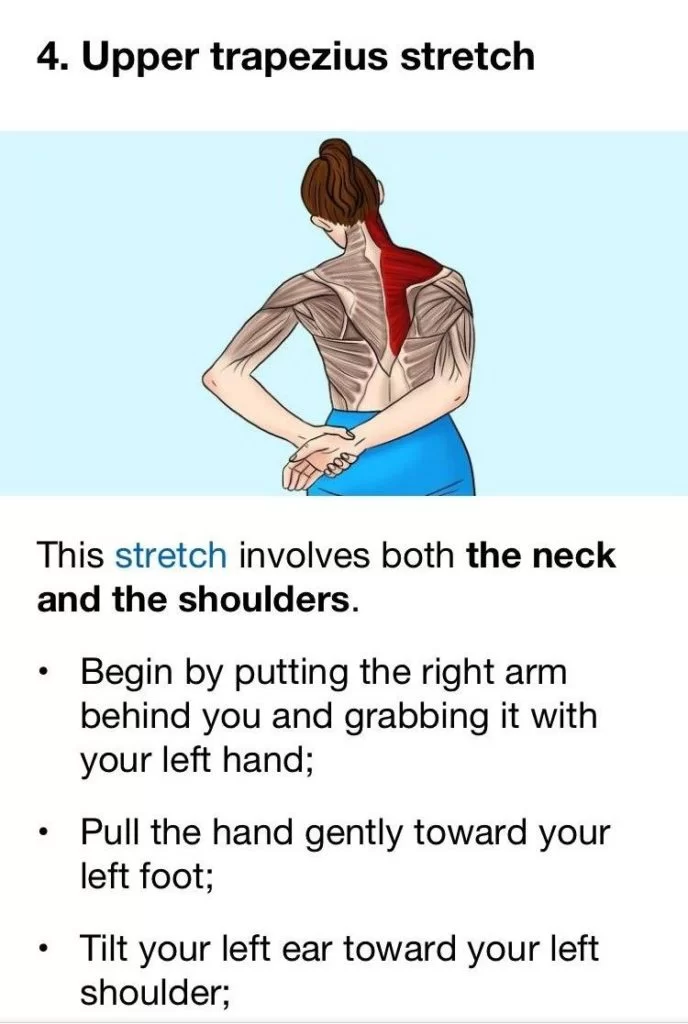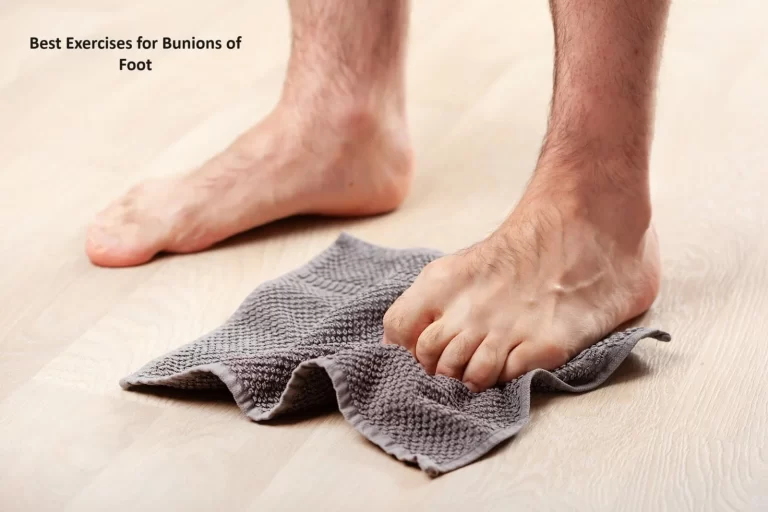Effective exercises for Bell’s palsy
Bell’s palsy is a medical condition characterized by an inflammation of the facial nerve, causing paralysis on one side of the face. Bell’s palsy is a form of temporary facial paralysis that can affect a person’s daily function, communication with others, self-esteem, and quality of life. It happens when the nerve that controls movement on one side of the face becomes inflamed. The condition often comes on suddenly, causing varying degrees of facial weakness, but starts to recover naturally with help of physical therapy.
Bell’s phenomenon is a medical sign that will help to assess or notice an upward and outward movement of the eye when you want to close the eyes. The upward movement of the eye is present in the majority of the population and is a defensive mechanism.
While there is not a known cause for Bell’s palsy, it affects between 35,000 and 40,000 Americans every year. It can affect anyone, but most persons with Bell’s palsy fall between the ages of 25 and 45. Researchers think that it might be caused by a virus, and it is associated with a variety of pre-existing conditions like diabetes, Hypertension or ear surgery, and trauma to the facial nerve.
Bells palsy occurs due to unexpected weakening of the facial nerve or temporary facial paralysis. There has no cure, but most people regain their facial strength and expression between 2 to 3 weeks and 6 months after symptoms started with help of electrical stimulation and exercises.
Bell’s palsy gives one side of the facial weakness or paralyzed. To help speed up the recovery process, many people choose to do physiotherapy or exercises for Bell’s palsy. Symptoms develop rapidly and often without an apparent cause.
Bell’s Palsy vs. Facial Paralysis
The main difference between facial paralysis and Bell’s palsy is how the conditions are diagnosed.
When a patient comes with facial paralysis, a cause for the problem can be identified by linked to a tumor, infection, or nerve damage.
If the patient is diagnosed with Bell’s palsy, the disorder appears without any cause. This can be quite troublesome since it can be tough for a patient to determine the best course of action to alleviate their Bell’s palsy symptoms.
Facial paralysis, in most cases, tends to be more permanent than Bell’s palsy as well. The symptoms of facial paralysis would not necessarily disappear on their own and can escalate over time. So, facial paralysis patients who forgot treatment can experience facial paralysis symptoms for a lifetime.
Comparatively, Bell’s palsy patients may regain their normal facial function at any time without any surgical treatment. In most instances, the symptoms of Bell’s palsy subside on their own without any permanent damage, this can be resolved with physiotherapy treatment. However, if Bell’s palsy symptoms are longer than 3 months or longer, patients should seek out treatment.
Comprehensive testing is done to diagnose if a patient is dealing with facial paralysis or Bell’s palsy. Lab tests are usually performed, along with a neurological and ear, nose, and throat (ENT) evaluation.
Common symptoms include:
- Unable to close one or both eyes all the way
- Difficulty in chewing and swallowing food
- Drooling of saliva
- Reduced ability to make tears
- Difficulty in speaking
- Pain around the ears
- Ringing in the ears
- Reduce the sensation of taste
- Lacrimation
Different facial muscles exercise explain below:
While doing various facial exercises for Bell’s Palsy, sit in front of the mirror.
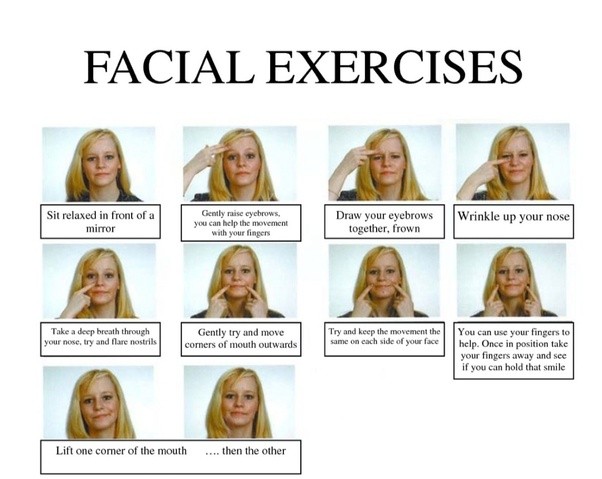
Eyebrow Exercises
How to do it?
- Look in the mirror, try to raise your eyebrows, and hold them in the raised state for 5 -10 seconds. Constantly holding your eyebrow in
- The raised state till the corner of your mouth or cheek starts to move. Then Wrinkle your forehead.
- Put your four fingertips on your affected eyebrow, and rub by making a firm stroke with your fingertips up to the hairline.
- Make a frowning face and try to draw your eyebrows downward.
Lip Exercises
How to do it?
- Curl your upper lip up. Then raise it and try to protrude your upper lip.
- Close and lightly compress both your lips. Then, release them and again lightly compress both the lips. Keep the lip compression till your eyelid begins to move. While performing this exercise, focus on relaxing the muscles that surround your eyes. Initially, your eye movements might occur. Following this regularly, you will be able to do these lip movements without involving your eye.
- Pucker both the lips and maintain lip compression for some time.
- Snarl by stretching both your lips. Now try to smile. During smiling focus on your smile till your eyelid is not involved. Watch your eye and lower eyelid. Also, watch your neck muscle and try not to pop it out while you are smiling.
- Firstly you have to smile by showing your teeth up and then smile without showing your teeth.
- Speaking activities also help to improve lip movements. Practice speaking words that involve letters B, M, F, and P slowly and softly, and repeat them by looking in the mirror continuously. Maintain your eyelids open while you are speaking.Puff your cheeks out with air in them., like you inflated a balloon. Now, hold these air-puffed lips shut ensuring that no air escapes out.Hold your puffed cheeks for 4 to 5 seconds.
Nose Exercises
How to do it?
- Wrinkle up your nose.
- Sniffle
- Have a deep breath through your nostrils and try to flare both nostrils.
Eye Exercises
How to do it?
- Looking at the sky Compress your eyes making them narrow as if you are trying to look at the sun. Close your eye gently.
- Look towards the floor. your neck should be straight and without bending it look down, this helps in exercising your eye and eyelids.
- Put the back of your index finger on your closed eyelid and use the opposite hand along your eyebrow to stretch your eyebrow upwards. This movement helps your affected eyelid to relax and prevents it from becoming too stiff.
- Gently press your eyelids together.
- Wink your 1 eye gently and then the other. Make sure you don’t push it.
- Try to Wide open your eyes without doing the unnecessary movement of your eyebrow. Stop opening your eyes if you experience any inappropriate muscle movement.
Neck and Chin Exercises
How to do it?
- Tilt your head to one side and slightly backward, then hold it for 10 seconds and slowly get back to normal. Follow the same on the another side. This exercise helps to stretch your neck muscle and improves its flexibility.
- Wrinkle or harden your chin Like a boxer, stick out your chin While doing these exercises at home, to mitigate your discomfort resulting due to Bell’s palsy, you also need to take some proper care.
Facial muscle wise exercise explain below:
Orbicularis oris exercises
The puck
- Start this exercise by standing or sitting with a good posture. Pucker your lips with force and hold for 10 seconds. Repeat this exercise 10 times.
The smile
- Start this exercise by standing or sitting with a good posture. Press both lips together tightly, put the middle fingers at the corners of the mouth, and pull slightly. Hold this position for 10 seconds then repeat 10 more times.
Orbicularis oculi
- This muscle helps to close lids tightly resulting in a winking, it also protects your eye from bright light. This helps to close lids gently resulting in blinking.
Lid Squeeze Exercise
- Start this exercise by standing or sitting with a good posture.
- Close your eyes and put your palm over your eyes and pressed against your eyelids with your two fingers resting against your forehead.
- Breath in and tightly squeeze your eyes closed as much as possible by you.
- Hold for 5 seconds and relax. Repeat ten times.
Surprise Exercise
- When you’re surprised, your eyelids and eyebrows raise without your knowing it.
- To perform this exercise you have to Sit in a comfortable position with your feet together.
- Elevate your eyebrows and eyelids as much as you can. like you were trying to touch the top of your head with your eyelids and eyebrows.
- Hold this position for 5 seconds and release the contraction. Repeat 10 times.
Look Around Exercise
- For this exercise, you have to Sit or stand and look up as much as you can while keeping your head as steady as possible.
- Hold this position for 5 seconds and then look down as much as you can without doing any movement in your head.
- Hold this position for 5 seconds and repeat while looking first to the right, then to the left.
- If necessary, you can repeat this entire cycle with your eyes closed as well.
The Partial Wink Exercise
- You can do this exercise anywhere at any time. This exercise is done by partially winking one eye at a time and holding the position for 2 seconds.
- Do not completely close your eyes, since this exercise is designed to help you gain more control over your orbicularis oculi muscles.
- Try to do two sets of 30 repetitions on both eyes.
Buccinator Exercise
Pipe Blows
- See how long you can make the ball hover. Alternative/Modification: Also hold elastic with the tip of the tongue to the ‘spot’.
Straw Drink
- Place a straw into the glass and the other end flat against your upper teeth.
- Place your tongue tip to the spot with elastic. close lips tight. keep your teeth together, then time the drinking process. our aim is to suck up a ¼ cup of water in under 20 seconds
Balloon Pops
- To perform this exercise you have to fill your cheeks with air, close the lips tight, and use a flat hand to quickly squeeze the air out with a burst of sound.
Balloon Blowing Using Only Nose
- Blow into a balloon break breath in through the nose and continue to blow.
Frontalis exercises
- Your face should be in a neutral position and focus on pulling up the eyebrows.
- Elevate the eyebrows until one can feel a pull upward.
- This movement should be held for five seconds.
- Initially do 5 repetitions and gradually increase the number of repetitions every week.
Corrugator Supercilli exercise
- This muscle action is the move your eyebrow downward and medially, producing the vertical wrinkles on your forehead.
- It’s the “frowning” muscle and may be regarded as the principal muscle in the expression of suffering.
- It also contracts to prevent high sun glare, pulling the eyebrows toward the bridge of the nose, making a roof over the area above the middle corner of the eye and typical forehead furrows.
- The muscle is sometimes injured due to any eye or ear surgery so it is severely painful or paralyzed.it will also be affected by botulinum toxin as a preventive treatment for some types of migraine or aesthetic reasons.
Nasalis exercises
Nose wrinkle
- Wrinkle your nose and cheeks, hold for a couple of seconds relax, and then repeat.
Nose shift
- Move your nose to one side, hold, and repeat on the other side.
- Create exercise plans for your patients
- Easiest to use exercise prescription software! Start your free trial today!
Exercise for Mentalis
- Move your lower lip upward. This will wrinkle the skin of your chin.
- If you place your finger firmly on the mentalis muscle you will feel that it is contracted.
- Hold this contraction for a couple of seconds. Now strongly lower your chin.
- Hold this contraction for two seconds. Don’t move the head though.
- The head remains stationary throughout the exercise. Do this exercise maintaining proper form for 10 or 12 repetitions.
Make sure you follow these care tips.
- Try chewing your food by involving both sides of your mouth.
- Doing so helps you retain normal patterns when you get your normal movements back.
- Make sure you don’t chew the gums as chewing the gums exercises your wrong muscles and may also make you suffer from synkinesis.

